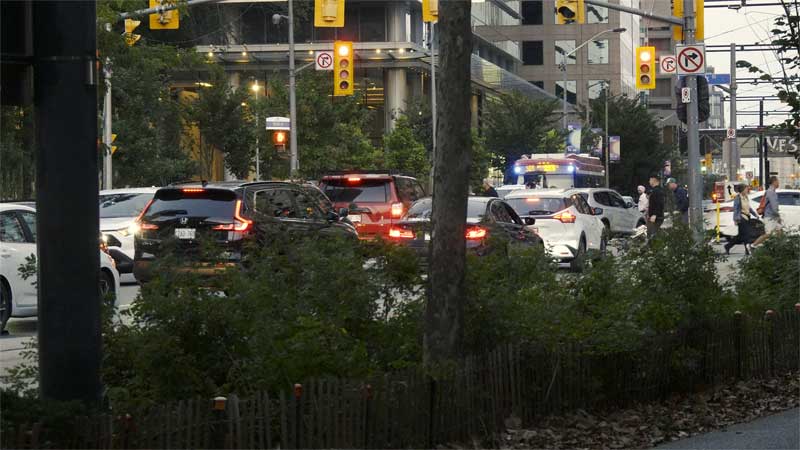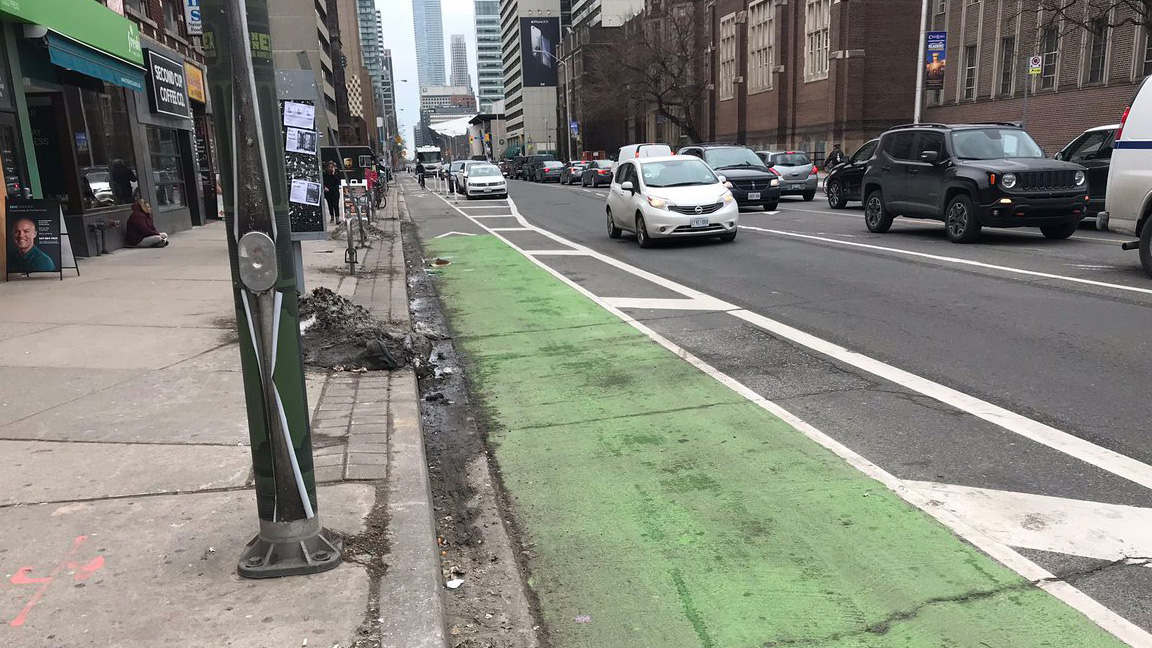Infra
🍁🏙️ New Data Shows that City of Toronto’s Traffic

The City of Toronto released new data demonstrating the success of traffic congestion management measures in speeding up travel times and improving transit reliability on several key corridors.
Spadina Avenue temporary bus lane
In late June, the City installed a temporary southbound bus and cycle lane on Spadina Avenue between Richmond Street and Lake Shore Boulevard to improve traffic flows, transit reliability and cyclist safety while the TTC operates buses in place of streetcars during overhead infrastructure work.
In combination with traffic management support from Traffic Agents and the Toronto Police Service (TPS) at key intersections on Spadina Avenue, southbound bus travel times between Dundas Street West and Lake Shore Boulevard during the afternoon peak period (3 to 7 p.m.) have been reduced by up to 40 minutes (from 56 minutes at its peak to as quickly as 16 minutes).
The temporary bus lane will remain in place until the TTC completes its essential infrastructure upgrades in December.
Left-turn from Lake Shore Boulevard onto Spadina Avenue In August, the City implemented a left-turn option from Lake Shore Boulevard onto Spadina Avenue to help alleviate traffic congestion on the Gardiner Expressway during critical rehabilitation work on the section between Dufferin Street and Strachan Avenue.
Previously, drivers could only turn north onto Spadina Avenue if they remained on the Gardiner through the construction zone.
The new left-turn option brings benefits for drivers on either roadway:
• Drivers who take Lake Shore Boulevard as an alternative to the eastbound Gardiner Expressway can save up to 10 minutes in travel time between the Jameson Avenue and Spadina Avenue exits.
• Travel times on the Gardiner Expressway have reduced by five to 18 minutes due to the lower traffic volume.
King Street Transit Priority Corridor
This year, the City has implemented several measures to significantly improve transit travel times along King Street while critical construction work on Adelaide Street was completed.
These measures include adding dedicated traffic signals and signage for motor vehicles, transit vehicles and cyclists, and deploying Traffic Agents and TPS officers to key intersections.
Additionally, traffic signal timings have been modified to increase the east-west travel times for streetcars, giving them more time to get through intersections.
As a result, streetcar travel times on King Street have remained relatively consistent with those announced earlier this year (28 to 44 minutes faster between University Avenue and Jarvis Street compared with 2023’s peak travel times).
The percentage of driving violations through intersections has also remained consistently 60 per cent lower throughout 2024 compared with December 2023.
Liberty Village Traffic Action Plan
The City is leveraging proven traffic management strategies in Liberty Village to alleviate congestion and ensure the safety of all road users around this busy area, including:
• Deploying Traffic Agents and Paid Duty Officers to key intersections during games at BMO Field.
• Installing new traffic cameras at the intersections of Strachan Avenue/Wellington Street West and Dufferin/Liberty Streets so City traffic engineers can make real-time signal timing adjustments to improve traffic flows.
• Limiting lane restrictions for non-emergency construction work.
In addition, the City and TTC completed watermain and streetcar track replacement work on King Street between Dufferin Street and Strachan Avenue 10 weeks ahead of schedule, enabling this key corridor to fully reopen to motor vehicles and transit.
Traffic Agents
Traffic Agents are deployed to manage traffic at intersections by directing all road users in real-time. The agents play a crucial role in ensuring roads are clear for transit and emergency vehicles.
Overall, the presence of a Traffic Agent:
• Eliminates instances of vehicles blocking intersections 96 per cent of the time.
• Reduces travel times by up to 33 per cent.
• Decreases the risk of collisions or near misses between vehicles, cyclists and pedestrians.
The City will provide a comprehensive update on its Congestion Management Plan to City Council in October.
SOURCE: City of Toronto










